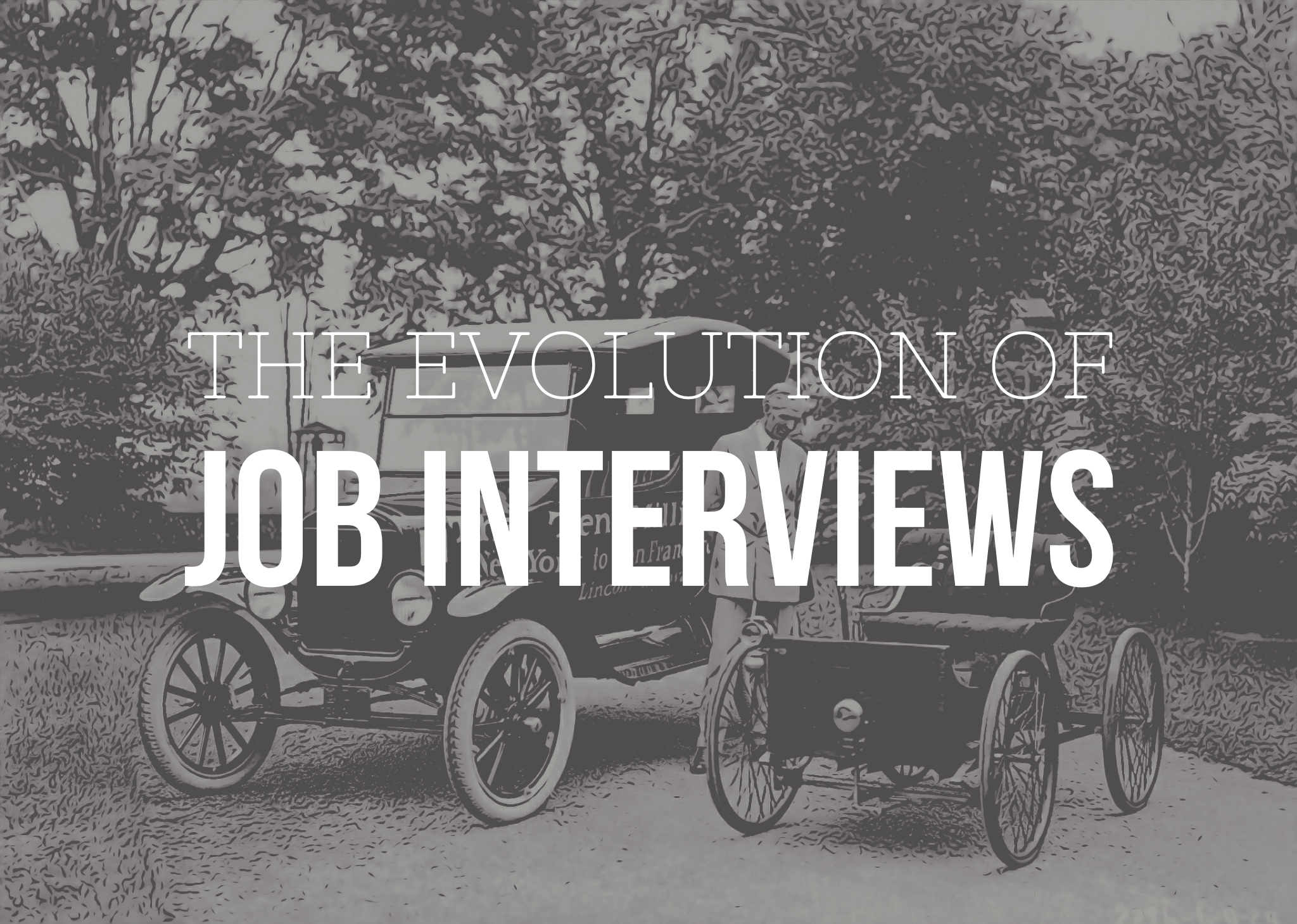Job interviews help both the employer and candidate assess whether there’s a good fit between the two and if they can see a good long-term relationship forming. It’s no surprise that everyone has ideas about how to create the best interview process and, as it turns out, this goes all the way back to 1900s.
Spark Hire recently created an infographic on the evolution of job interviews, exploring how technology has changed the way people are matched to jobs and we thought you’d find it interesting.
Here’s what we learned:
Prior to railroads, automobiles, and airplanes, people primarily worked in the family trade or as an apprentice for another local family. Workers would receive on-the-job training, and often didn’t have a choice in where they worked – which also means there was little to no competition for jobs.
Then, during the industrial revolution, people began working in factory jobs where employment was dependent on performance. Unskilled workers could be easily replaced, so finding the right fit from the get-go wasn’t necessary.
Once the first US railroad was completed in 1830 and the Model T was introduced in 1908, workers were able to commute longer distances to work, or move to larger cities easier than before. As the competition for jobs increased, employers needed a way to decide which candidates to hire.
The first personality test, Woodward’s Personal Data Sheet, was created in 1917 to evaluate soldiers in WWI and was imitated by companies who wanted to screen workers.
Thomas Edison is said to have created the first job interview, when he created a written test to evaluate candidate’s knowledge in 1921. Since then, the invention of the phone and internet have transformed the recruitment process into what it is today. We can now conduct an interview process over the phone or video, if need be, so traveling long distances isn’t even necessary.

.png?width=801&height=222&name=BoJo%20-%20A%20R.com%20Co%20Logo%20(1).png)
